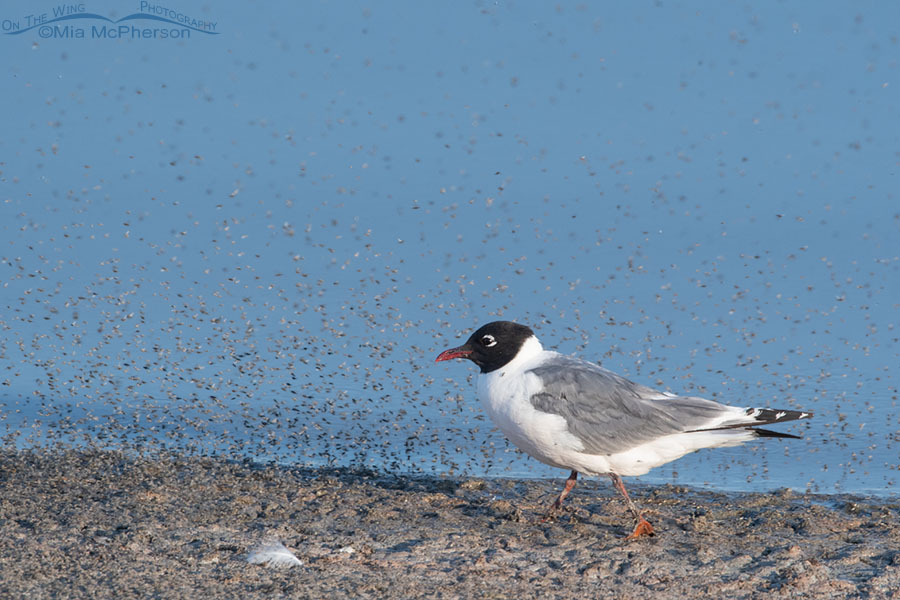 Brine flies and a Franklin’s Gull on the shore of the Great Salt Lake – Nikon D500, f7.1, 1/800, ISO 500, Nikkor 500mm VR with 1.4x TC, natural light
Brine flies and a Franklin’s Gull on the shore of the Great Salt Lake – Nikon D500, f7.1, 1/800, ISO 500, Nikkor 500mm VR with 1.4x TC, natural light
While Franklin’s Gulls are in northern Utah for their breeding season brine flies are an important food source for the adults and their young and are a part of their breeding success here in the Great Basin. There are at least three known species of brine flies in the Great Salt Lake and researchers suspect that there are more. Brine fly larvae feed on algae and detritus then pupate in a chrysalis before becoming adults. Franklin’s, Ring-billed and California Gulls all consume the brine flies along with many other bird species.
Last July I was able to photograph an adult Franklin’s Gull as it walked through clouds of brine flies on the shore of the hypersaline Great Salt Lake. I enjoyed every minute I had with this bird and loved watching it chase down the flies through my viewfinder.
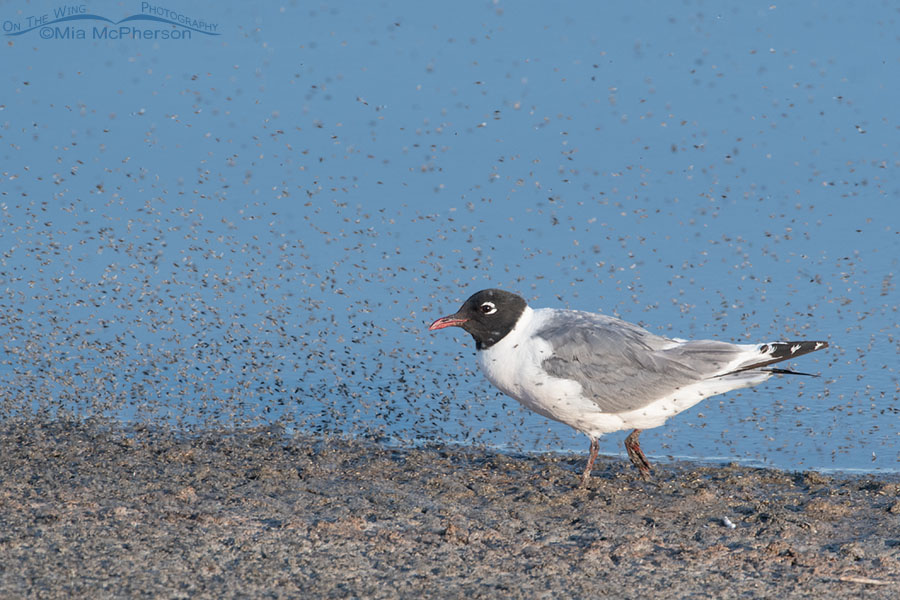 Adult Franklin’s Gull walking in a cloud of Brine flies – Nikon D500, f7.1, 1/800, ISO 500, Nikkor 500mm VR with 1.4x TC, natural light
Adult Franklin’s Gull walking in a cloud of Brine flies – Nikon D500, f7.1, 1/800, ISO 500, Nikkor 500mm VR with 1.4x TC, natural light
As the Franklin’s Gull walked forward a cloud of brine flies rose in front of it. In this photo the brine flies can be easily seen in front of the gull’s white and dark feathers.
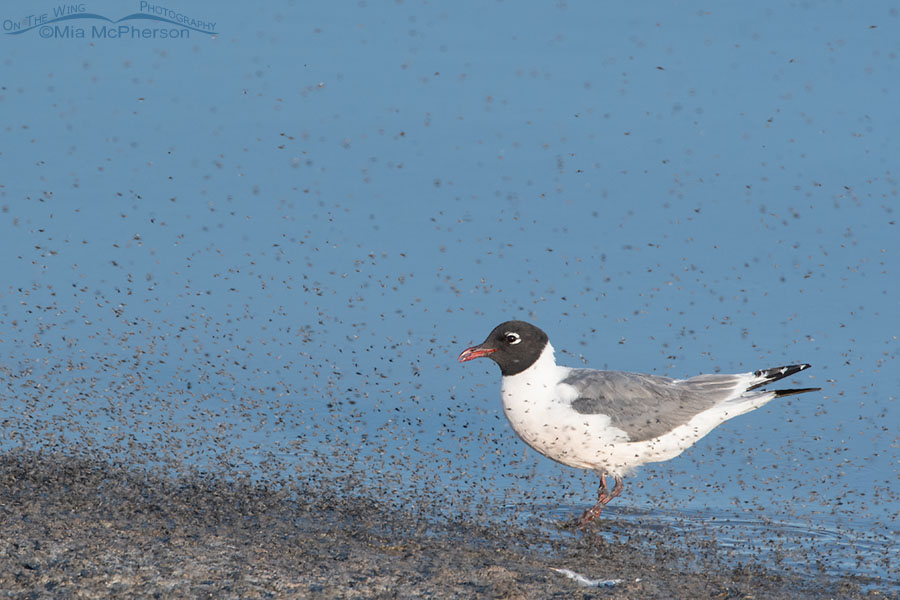 Franklin’s Gull, Brine flies and the Great Salt Lake – Nikon D500, f7.1, 1/1000, ISO 500, Nikkor 500mm VR with 1.4x TC, natural light
Franklin’s Gull, Brine flies and the Great Salt Lake – Nikon D500, f7.1, 1/1000, ISO 500, Nikkor 500mm VR with 1.4x TC, natural light
As the gull moved around the shoreline of the lake it stirred up the flies. All of the dark gray and black specks in this photo are brine flies.
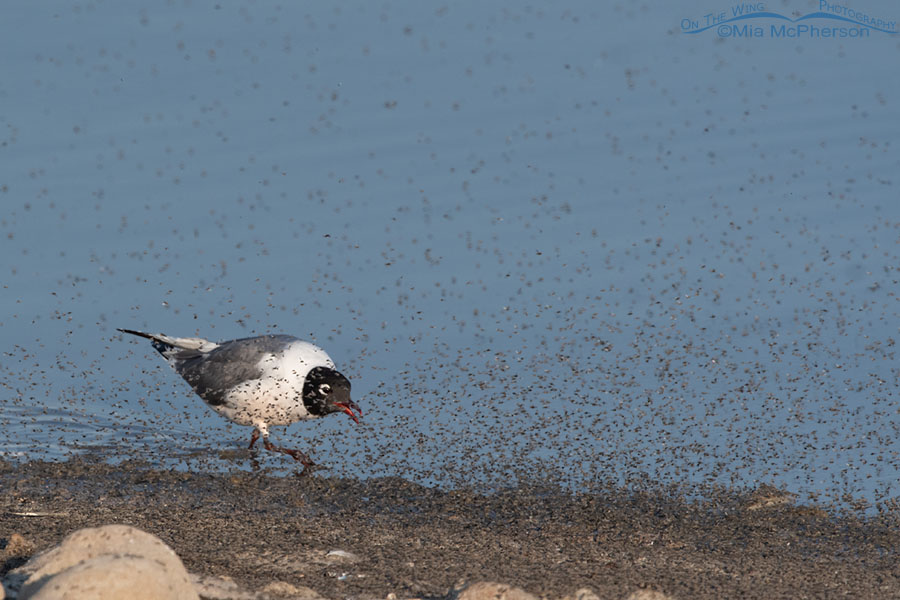 Adult Franklin’s Gull chasing flies on the shore of the Great Salt Lake – Nikon D500, f7.1, 1/1600, ISO 500, Nikkor 500mm VR with 1.4x TC, natural light
Adult Franklin’s Gull chasing flies on the shore of the Great Salt Lake – Nikon D500, f7.1, 1/1600, ISO 500, Nikkor 500mm VR with 1.4x TC, natural light
I have seen and photographed Franklin’s Gulls passively snatching brine flies from the air while standing and resting. In these photos the Franklin’s Gull was chasing them down.
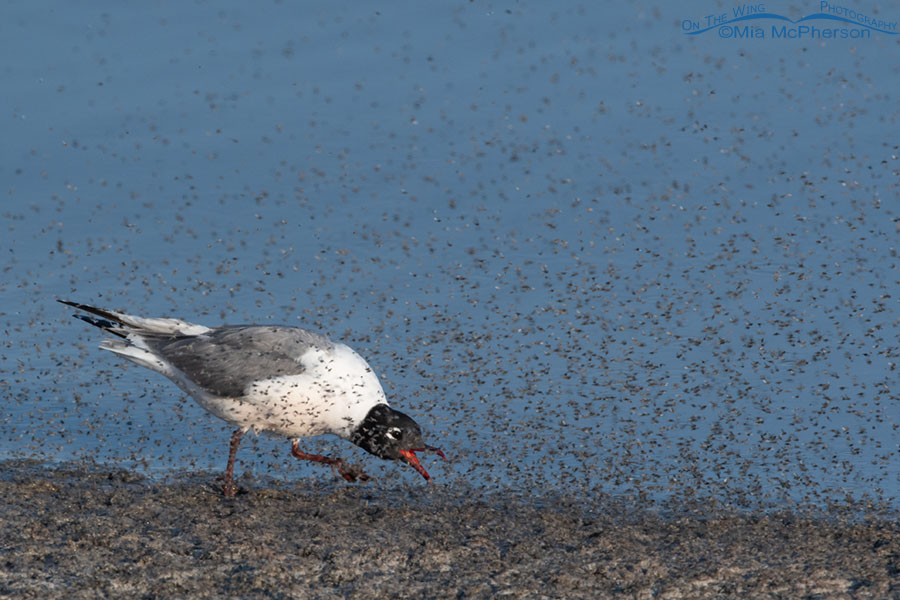 Adult Franklin’s Gull scooping up Brine flies at the Great Salt Lake – Nikon D500, f7.1, 1/1250, ISO 500, Nikkor 500mm VR with 1.4x TC, natural light
Adult Franklin’s Gull scooping up Brine flies at the Great Salt Lake – Nikon D500, f7.1, 1/1250, ISO 500, Nikkor 500mm VR with 1.4x TC, natural light
While the Franklin’s Gull was running on the shoreline it used its bill to scoop the flies from the air. The clouds of flies can be so thick that they mess with the auto focus on cameras and it can be tricky to get the gulls sharply in focus behind the swarm of brine flies. Practice helps and having patience does too.
After I took these Franklin’s Gull photos I got side tracked by thousands and thousands of Red-necked and Wilson’s Phalaropes in flight. They also feed on the brine flies to fuel up for their long migration.
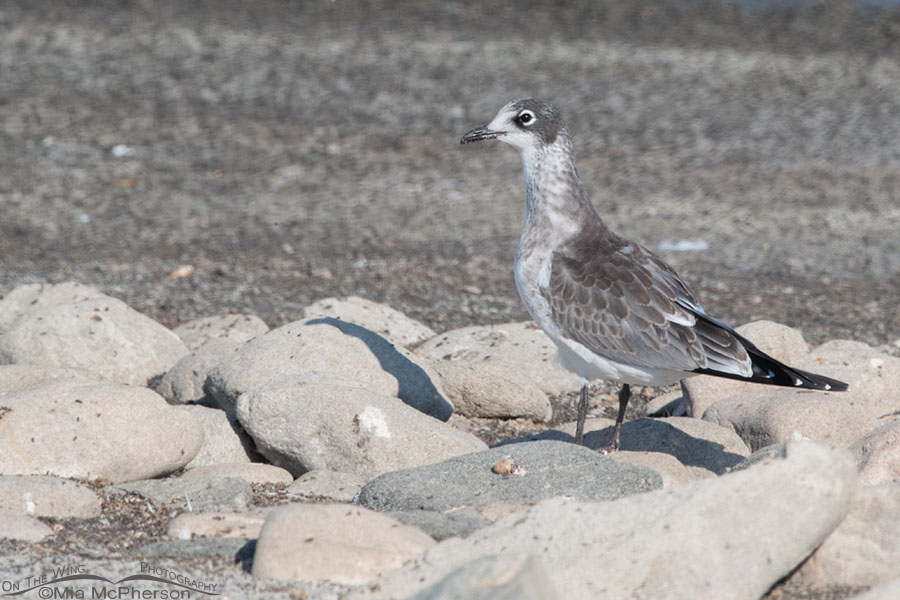 Hatch year Franklin’s Gull on the shoreline of the Great Salt Lake – Nikon D500, f7.1, 1/2000, ISO 500, Nikkor 500mm VR with 1.4x TC, natural light
Hatch year Franklin’s Gull on the shoreline of the Great Salt Lake – Nikon D500, f7.1, 1/2000, ISO 500, Nikkor 500mm VR with 1.4x TC, natural light
Later on in the morning I also photographed a young Franklin’s Gull that was learning how to catch the brine flies on its own. I was delighted to photograph the hatch year gull.
On a sadder note, I don’t know if there is water in the lake this year where I photographed the adult Franklin’s Gull last summer. The Great Salt Lake has been drying up for years now and recently it dropped to its lowest level ever recorded. A dying Great Salt Lake will have significant impacts on the birds that depend on it and on humans too. More exposed dry lake bed means that there will be arsenic and heavy metals in the air when the wind blows, and the wind blows hard here in northern Utah quite often.
Our state leaders have completely failed to protect the Great Salt Lake. It is as plain and as simple as that. The state government tells Utahns to pay attention to fire danger signs but have recklessly ignored scientists about the dangers of climate change and the impact on the Great Salt Lake and the citizens all along the Wasatch Front.
Mia
Click here to see more of my Franklin’s Gull photos plus facts and information about this species. Click here to see more of my Brine Fly photos.


Very interesting series of shots. The Gulls have a well-earned history of saving the Great Salt Lake from buggie type critters.
Your narrative is spot-on…and scary. The ominous shrinking of the GSL…is horrible to watch and it is happening all over the earth. Politicians, especially in the U.S., are nothing more than a congregation of Nero’s; fiddling while Rome burns. Shameful.
It does look as if all the birds needs to do is stand still with their mouths open and swallow.
I feared bad news when I saw the title of your post. And sadly my fears were realised.
The worship of the great god profit serves so few of us well. And impacts on the world…
Lovely photos! Yes, sadly my last 2 trips out to Antelope Island the water is so far out the gulls are not visible. The small area where water is trickling from Farmington Bay to the causeway there are a few gulls and other birds eating brine flies along the shore line.
Glad to see the Franklin’s Gull feasting. And hoping against hope that your politicians catch a clue before it’s too late (if it isn’t already).
Politicians (probably the world over) have ignored scientists for years. Some, today, are still denying climate change. Sad. Great photos as usual.
Your photos are fascinating shots of a too often overlooked behaviour but you are braver than I to wade into all that fly territory (without a spacesuit😉). Sadly, I do believe it is too late for your lake and many, many more because politicians have been encouraged to allow corporations to deforest and burn and pollute under the guise of being business friendly and now that we know methane leaks from fracking were magnitudes more than reported and the Amazon has been pushed into becoming a net carbon pump instead of a carbon sink I think we are well on our way to the worst case scenario. All we can do now is appreciate these little marvels while we still have them. 💔